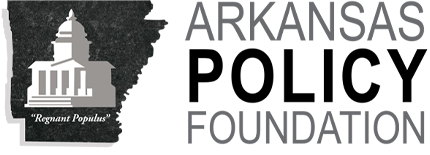(June 2008) A long-stated goal of Arkansas state government officials is achieving 100 percent parity with the U.S. average in terms of per capita personal income (Bureau of Economic Analysis).
Government economic development officials have led this quest, which at times as appeared similar to the search for the Holy Grail. That is to say, elusive.
Arkansas PCPI was 71 percent of the U.S. in 1971 when Gov. Dale Bumpers and the legislature raised the top income tax rate from five to seven percent. Arkansas PCPI was 75 percent of the U.S. in 1983 when Gov. Bill Clinton, promising income growth, raised the state sales tax to fund K-12 public education. Arkansas PCPI in 2007 was 78 percent of the U.S. To put these numbers in perspective, Arkansas, in nearly four decades has traveled only a quarter of the distance necessary to reach other state officials’ goal of 100 percent income parity with the U.S.
The process of income growth is more complex than the simplistic formula advanced by many officials: spending more tax dollars on public education.
Numerous variables, including several that are ignored in Arkansas, play a role in this process. These variables include the rule of law; freedom of contract; and property rights; a non-arbitrary regulatory environment; a skilled work force; infrastructure; policies that encourage entrepreneurs; and tax rates that do not place a state at a competitive disadvantage with regional or national economies.
It is unlikely Arkansas officials will achieve their goal unless they make a sincere effort to understand all of these economic variables.
Counties That Have Achieved Parity
Officials and citizens interested in the issue might also benefit from a historical review of Arkansas counties that have achieved 100 percent income parity with the U.S. There are 75 Arkansas counties. Only five counties achieved parity in the period will a sixth—Union County—returned to 96 percent PCPI reading in 2006.
Pulaski County, the seat of the state government and home to several public companies is the only county in Arkansas1 to record PCPI in excess of 100 percent in recent years. Pulaski County reached 100 percent in 1991, and its PCPI was 109 percent of the U.S. (2006).
Arkansas County PCPI was 109 percent in the U.S. (1973), 118 percent (1974), and 103 percent (1978). Lonoke County PCPI was 100 percent (1973) and 101 percent (1974). Woodcruff County PCPI was 114 percent of the U.S. (1974).
Prairie County holds the distinction of having recorded the highest Arkansas county PCPI: 129 percent of the U.S. in 1974. Prairie County also reached 112 percent (1973) and 100 percent (1978).
The factors that led to these four counties to briefly achieve parity were non-recurring events. Following are current (2006) PCPI readings for the four counties:
Arkansas County, 80 percent
Lonoke County, 73 percent
Prairie County, 62 percent
Woodruff County, 55 percent
Conclusion
Arkansas’s quest for 100 percent income parity wit the U.S. has proven elusive to state government officials. Arkansas PCPI is only 78 percent of the U.S., not much higher than in 1971 when the state income tax was raised, and 1983 when the sales tax was increased.
Pulaski County first achieved income parity with the U.S. in 1991, and is the only one of Arkansas’s 75 counties to achieve the goal during a multi-decade period.
Numerous variables, including several that are ignored in Arkansas, play a role in the process of income growth.









